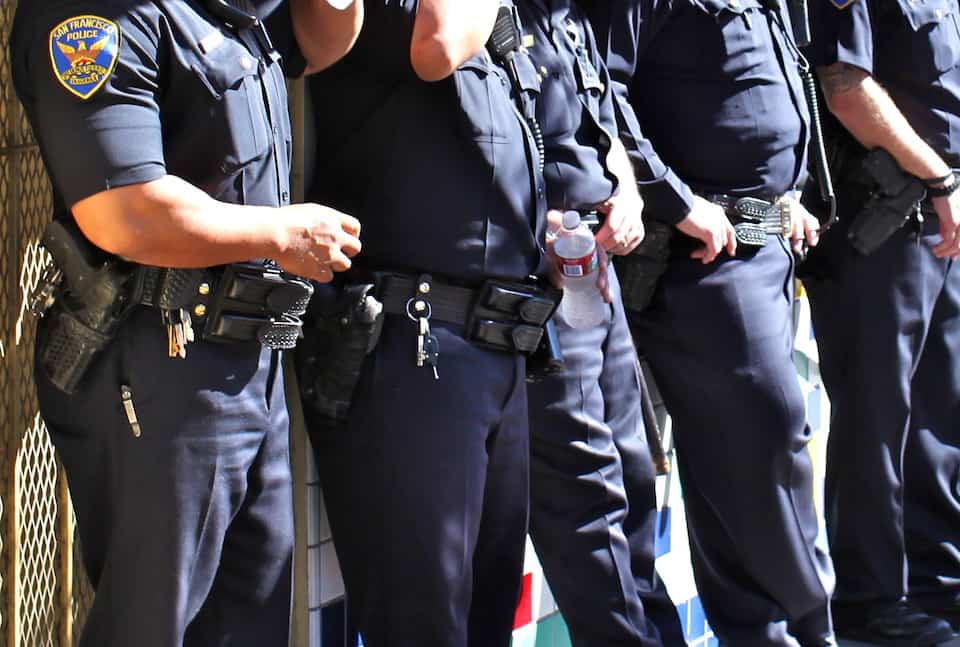[dropcap]L[/dropcap]ast month, Toronto Star columnist Desmond Cole argued that the Toronto Police Service’s frontline officers should no longer carry guns, citing recent shootings of emotionally-disturbed persons. While frustration in light of these deaths is absolutely understandable, depriving Toronto’s patrol officers of lethal force would be an overreaction with dangerous consequences for police and civilians alike.
In defence of his proposition, Cole recalled two recent incidents in Montreal where armed suspects were subdued using rubber ammunition. He omitted, however, that in Montreal, as in Toronto, patrol officers still carry and use lethal firearms, because only specialized units have access to rubber ammunition. In the two incidents he touted, the suspects were surrounded for an extended period of time, which allowed the tactical unit sufficient time to arrive and make use of their less deadly weapons.
Less lethal weapons, such as rubber bullets and Tasers, are indeed valuable tools in policing, but they are merely a complement to, not a replacement for, lethal firearms. Rubber bullets are known to have a reduced expected accuracy (in comparison to regular ammunition), albeit they still cause serious injury or death when striking the head or neck.
On the other hand, Tasers are extremely limited in range and rate of fire, and can be either too weak to incapacitate a suspect or so strong as to kill the target. Despite these limitations, Tasers cost around $1,500 each — twice the cost of a handgun — and would increase Toronto’s already massive police budget, if they were to be provided to all 5,000 frontline officers.
More importantly, the threat of gun crime in Toronto appears to remain present. Military grade weapons are seized from local criminal elements, and in 2015, there were 255 shootings in the city.
Furthermore, research shows that in 51 per cent of active shooter incidents in the United States from 2000-2010, the police arrived while the attack was ongoing. During 40 per cent of these occasions, the situation was resolved only when responding officers shot the suspect. Such incidents cannot be understood as an exclusively American phenomenon; civilians, politicians, members of the Canadian Forces, and police officers have all been targets in Canada in recent years. If anything, there is a case to be made for a faster and safer response to such events, meaning Canadian police officers should in fact be more heavily armed.
There still remains the issue that the use of lethal firearms to subdue a suspect is, in some cases, inappropriate and excessive. This is true, particularly when it comes to police interactions with those who are mentally ill.
[pullquote]As residents of Toronto, we should require our police officers to be ready for anything.[/pullquote]
Improvements are being made though; in each of the Toronto Police Service’s 17 divisions, there is almo∂st always a supervisor on duty who has a Taser. The Emergency Task Force and other specialized units also carry less lethal weapons. Additionally, Mobile Crisis Intervention Teams, comprised of a police officer and a mental health nurse, are available nearly 24/7 in 14 police divisions. The Toronto Police Service is also in the midst of a pilot project that examines the feasibility of three models of body cameras, devices that could have provided more details for investigation in shootings, like in the case of Andrew Loku.
Every police-involved death is a tragedy and, to some extent, could have been prevented. Police officers are placed in unimaginably stressful and dangerous situations every day, and the vast majority of these incidents are resolved peacefully. However, there are times when the force needed to protect the public is lethal. As residents of Toronto, we should equip our police officers to be ready for anything.
Emmett Choi is a fifth-year student at Victoria College studying philosophy and American Studies.


